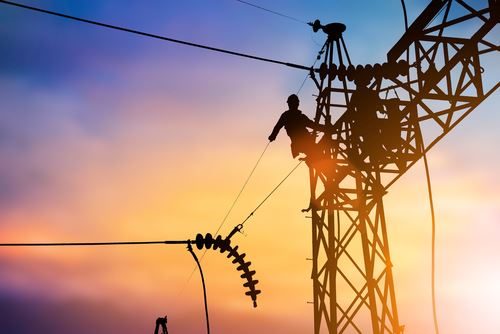Pacific Gas & Electric, also known as PG&E, filed for bankruptcy on January 29, 2019, a move that should come as no surprise due in part to the significant number of wildfire-related lawsuits pending against them. That includes lawsuits concerning the Camp Fire, a historic wildfire that resulted in 85 deaths and razed the town of Paradise, California. Plaintiffs in the Camp Fire cases allege that PG&E is to blame for the devastating fire.
Authorities have identified a steel hook failure on a nearly 100-year-old utility tower as the official cause of the Camp Fire. According to their investigation, the hook, which supported a high-voltage transmission line, gave out and caused the line to fall, which sparked and then ignited a fire. It’s believed that this failure also caused a second ignition source to spark some distance away.
If you’re one of the many people who have filed suit against PG&E as a result of the recent wildfires, or intend to file suit, you may be wondering how PG&E’s recent declaration of bankruptcy could impact your case. Attorney Stuart C. Talley recently released an update video, discussing how this bankruptcy process will work and what you can expect to happen with your case during the proceedings.
PG&E Plans to File for Chapter 11 Bankruptcy
When most people hear the term “bankruptcy,” they think of what’s known as a Chapter 7 bankruptcy proceeding, or a “liquidation bankruptcy.” These are cases where the debtor owes more to creditors than they own in assets. Through this process, a third party known as a trustee collects all of that party’s assets, sells them, and then distributes the money from that sale to creditors. Any remaining debt after that point is removed from the record.
Chapter 11 is dramatically different, and is known as a “reorganization.” In these cases, a company like PG&E can go to bankruptcy court and explain that it has a lot of debt that can’t be covered in the short term. This process allows it to reorganize the company while still doing business in order to pay off the outstanding debt.
Under Chapter 11 bankruptcy procedures, PG&E will first request a “proof of claim” from all potential claimants in order to determine for the court and the parties the true amount of debt owed. PG&E will then take this information and develop a reorganization plan to present to the bankruptcy court. All parties who have potential claims against PG&E (including plaintiffs in lawsuits, creditors, bondholders, and stockholders) will have the opportunity to vote on whether or not to approve of the plan. If they do, the bankruptcy court will decide whether the plan is fair and in the best interests of all claimants collectively.
Bankruptcy & Your Claim Against PG&E
After speaking with experts and those familiar with these proceedings, it’s generally believed that those who have filed or submit a claim may recover from PG&E. However, this proceeding will likely extend the amount of time for payment on those claims. Lawsuits are not quick matters to begin with, and bankruptcy proceedings may add more time to this process.
There is another drawback: fire victims will not be able to simply file a lawsuit against PG&E while the company makes its way through the bankruptcy process. Bankruptcy stays pending litigation and protects the company from additional lawsuits. As a result, you’ll have to file what’s known as a “proof of claim,” which is a form that essentially notifies the bankruptcy court that you believe PG&E owes you money. You will have to do this even if you’ve already filed a lawsuit against PG&E.
If you want to file one of these forms, you’ll have to do it quickly; you will probably have just 180 days to submit your proof of claim.
If you are a current client, we will be filing a proof of claim on your behalf prior to the deadlines established by the bankruptcy court.
If you’re a Camp Fire victim and not a current client, we strongly encourage you to contact our Northern California Camp Fire attorneys right away so that we can ensure your interests are protected and a claim is pursued and filed on your behalf.
Call Kershaw Talley Barlowat (916) 520-6639 to speak with a member of our team today.


